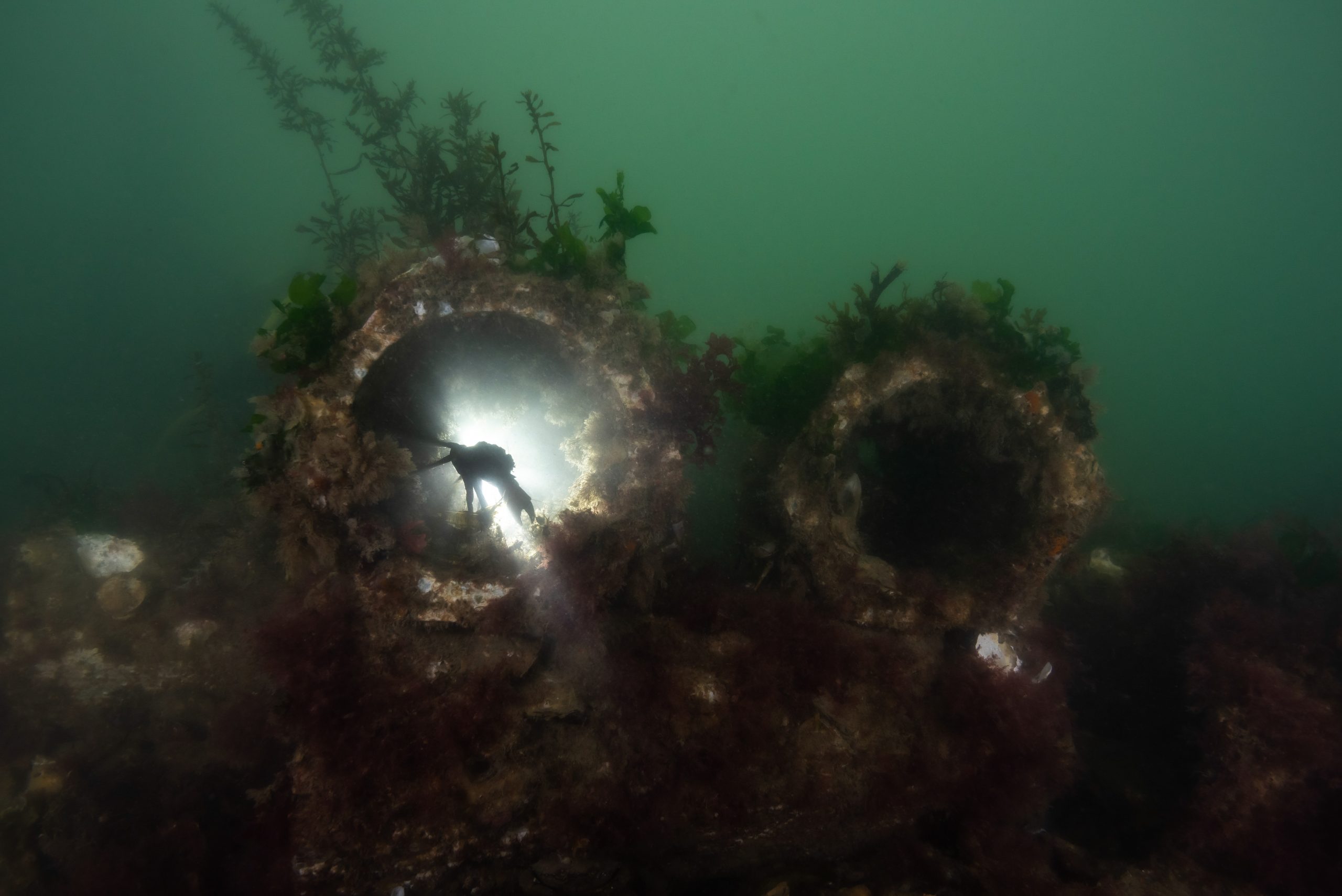
Constructed waterways, dams, and ports have, for centuries, connected Europe to the detriment of marine life. This is particularly true in the Netherlands which has a water network of over 5000 kilometres, most of which are man-made canals. The Amsterdam start-up, ReefSystems, is providing a new solution to this problem by creating modular systems built to attract aquatic flora and fauna.
“When we dove into this whole topic, we could really see how artificial the whole of the Netherlands is,” says Jesse de Bont, CEO and co-founder at ReefSystems. “A lot of the canals are built from these sheet piles. They are ten meters long and installed directly into the ground.”
This means limited vegetation – and few places for marine life to find refuge during their inevitable migration cycle. ReefSystems’ answer to this is the Sheet-Pile Eco-Territorial Reinforcement (SPECTER). It is a multi-layered hanging case for marine vegetation, where the topmost case grows above-water plants and the ones below grow aquatic vegetation.
I wanted to do something good, and I wanted to do something which is still here when I’m dead.
Max Dijkstra, co-founder ReefSystems
SPECTER is attached directly onto existing sheet-pile installations, creating a green aquatic road for salmon, eel, and stickleback bass, among other aquatic life.

Modular building system
“I’ve been fascinated by fish and other aquatic animals since I was a little kid,” explains Max Dijkstra, co-founder and ReefSystems’ chief designer. “I wanted to do something good, and I wanted to do something which is still here when I’m dead.”
Dijkstra began what would become ReefSystems while completing his degree in design at ArtEZ University. He developed a modular building system (MOSES) for his graduation project. Designed with sea-life in mind, MOSES is a concrete tube with panels on either side, shaped to allow different aquatic life in each tube. There are twenty different shapes – meaning 20 different micro habitats for marine life.

Dijkstra and De Bont had known each other a long time but had lost touch until an accidental run-in at a café. They caught up over drinks and discovered they shared a passion for preserving marine life. “I was looking for a lifetime project to get into and we collided at exactly the right time,” recalls De Bont.
After receiving funding from the World Wildlife Foundation (WWF) and the Climate Kic accelerator program, the two began to launch projects in partnership with Wageningen University and Royal Boskalis Westminster.
Different ecological contexts
Their first project in 2019 along the Haringviet Locks in the south-west of the Netherlands was a smash-success. Using Environmental DNA sampling (eDNA), they were able to prove the presence of 17 different species of fish around their artificial reef. This led to backing by the Port of Amsterdam and Rijkswaterstaat on next project in IJmuiden and their third in Amsterdam’s Marineterrein living lab. Collectively the ‘North Sea Channel Project’, it is an installation of 30 MOSES-modules spread over three different locations in the North Sea Channel (Noordzeekanaal).
“We wanted to test our product in three different ecological contexts,” says Dijkstra. That is salt, brackish, and fresh water. By doing so, they will be able to understand the real effects of an artificial reef within a local ecosystem.
Results from their most recent project will be ready in roughly 20 months and, since adding SPECTER to their marine-life solution suite, already have their sites on another project along waterways in Gaag, Schipluiden. These changes have both environmental and business applications: European legislature demands that municipalities need to attain certain points every year based on how many water plants they have and how many of fish habitats there are.
“With the sheet-piles, the necessary ecological levels cannot be reached” says De Bont. “When we install these SPECTER cages on the sheet piles, this becomes possible.
Read about how algae growth increases by 100 times on 3D-printed coral

